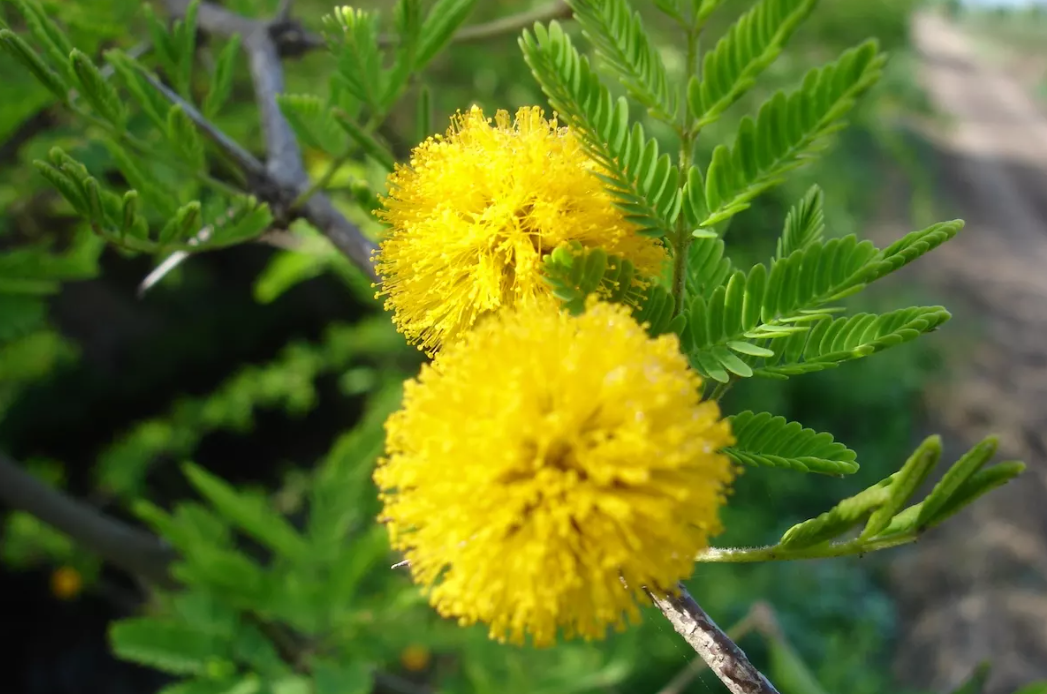Product Description
Production Method
A concrete is produced by solvent extraction (hexane) of the fresh puff-ball looking blossoms. The absolute is displaced from the concrete using ethanol, and the by-product of absolute is wax. AF&Co. produces a certified 100% Organic Cassie Extract (under EU, USDA-NOP, and Biodynamic standards). Cultivated for a while in Grasse where concrete and absolute were produced during the 20th c., the production of Cassie concrete and absolute are, today, entirely an Egyptian affair.
Uses
In Perfumery, the absolute is used mainly in high end fine fragrances and cosmetics “with an odor profile which is extremely warm, somewhat green-herbaceous, sweet floral with powdery-balsamic/spicy notes, with a deep and tenacious cinnamic-balsamic undertone. Other facets show a more fatty almost aldehydic character on top of the sweet florality, and powderiness. The dry-down is waxy, powdery-sweet with an almost ambered aspect. It is used with great effect in heavy floral blends, white flower perfumes and aldehydic floral compositions.” Burfield, T. “Natural Aromatic Materials – Odours & Origins” (2000) where it lends its unique warmth, reminiscent of freshly ironed linen, and woody-floral note. In Flavors, it is used in confectionery and ice creams applications where it can be used to enrich vanilla flavors for example. Also, “it gives a delightful naturalness and body to raspberry flavors when used with extreme discretion as part of a « bouquet ».” Arctander, S., “Perfume and Flavor Materials of Natural Origin”, 1960. A much more powerful fragrance than its cousin Mimosa (Acacia dealbata syn. decurrens) – with which it blends very well by the way — Cassie plays magic with ionones, methylionones, heliotropine, anisalcohol, bergamot oil, costus, orris products, olibanum, ylang-ylang, in ambre and Oriental bases. In Aromatherapy, Cassie absolute is not that well known and is therefore scarcely used. It finds uses in the fragrance compositions of product lines (shampoos, soaps, etc.) not directly related to core aromatherapy applications.
Botanical Origin & Historiography
Native to central America and southern North America. Introduced to the Mediterranean in the mid to late 16th century in the wake of the Colombian discovery of the Americas, Cassie’s Latin species name honors Odoardo Farnese (1573–1626) who maintained and developed the eponym gardens created in 1550 by his grand-uncle Cardinal Alessandro Farnese (1520–1589) on the Palatino Hill in Rome (the same applies to one of Cassie’s absolute components, Farnesol); whereas the genus name comes from the Ancient Greek ἀκακία (acacia) meaning “thorny tree” from ἀκή (akḗ, “point”) arguably from the ancient Egyptian. It was first described by Europeans under the name Acacia Indica Farnesiana in 1625 by Tobias Aldini (a doctor and botanist, 1570–1662) from plants grown in the Farnese Gardens (he was named curator of the gardens by Odoardo Farnese) from seeds collected in Santo Domingo, in what is now the Dominican Republic, which germinated in 1611. Tobias Aldini included an illustration of the plant, which he contrasted with an illustration of the first known Acacia; Acacia nilotica (a.k.a. the Egyptian acacia or Gum Arabic tree). This first (European) illustration of the plant was later designated as the (lecto-)type. In 1753, Linnaeus used Aldini’s work as basis for his taxon Mimosa farnesiana. In 1806 Carl Ludwig Willdenow moved this taxon to the genus Acacia. The oldest European literature record of it in Egypt dates back to the travels Richard Pococke, Bishop of Ossory and Meath (Ireland), did in Egypt (1737―1741, publ. 1743). Cassie becomes naturalized in its new home next to the endemic species Acacia nilotica, A. seyal, A. albida. Contrarily to these latter species, which can be found in the driest areas of the Sahara desert, A. farnesiana still dwells close to human inhabited areas along subsidiary irrigation canals of the Nile and amidst sugar cane plantations where it was first used to create property hedges. The pods are used by Bedouin tribes to feed their goats and also in leather tanning.
